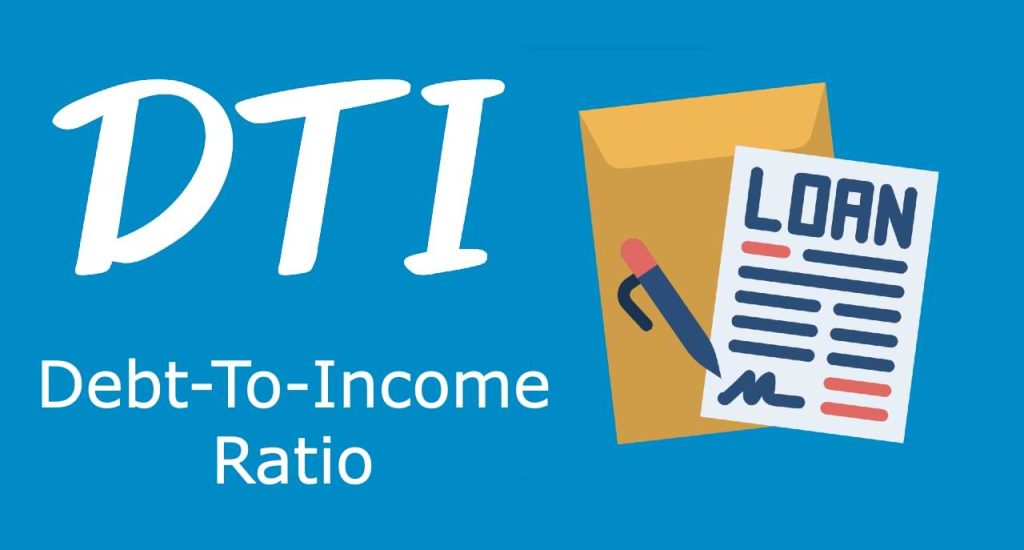Avoiding Common Problems When Applying for a Mortgage: Tips from a Real Estate Expert
Make the home-buying process more manageable and ensure you get a loan that works for you.
Check Your Credit:
What steps are involved in checking my credit score before applying for a mortgage in California?
The first and most critical step in securing a mortgage loan is to check your credit score.
1. Obtain a free credit report: You’re entitled to one free credit report each year from each of the three credit bureaus (Equifax, Experian, and TransUnion). You can request your reports at AnnualCreditReport.com.
- Experian: https://www.experian.com/
- TransUnion: https://www.transunion.com/
- Equifax: https://www.equifax.com/
2. Review your credit report: Check for errors, inaccuracies, or any fraudulent accounts. If you find any errors, dispute them with the credit bureau.
3. Consider a credit monitoring service: Some credit monitoring services offer free credit scores and alerts for changes to your credit report. Consider signing up for one of these services to stay on top of your credit score.
4. Check your FICO score: Most lenders use the FICO credit score to determine your mortgage eligibility and interest rate. You can check your FICO score for a fee at myFICO.com.
5. Improve your credit score: If your credit score is low, take steps to improve it before applying for a mortgage. This may include paying down debts, making on-time payments, and disputing any errors on your credit report.
What are some common problems when applying for a mortgage?
1. Low credit score: Your credit score is one of the most important factors that lenders consider when deciding whether to approve you for a mortgage. If your score is too low, you may be denied or offered a higher interest rate.
2. Insufficient income: You need to show that you have enough income to make your mortgage payments on time. If your income is too low, you may not qualify for the loan you want.
3. High debt-to-income ratio: Lenders also look at your debt-to-income ratio, which is the amount of debt you have compared to your income. If this ratio is too high, you may not qualify for a mortgage, or you may be offered a smaller loan amount.
4. Lack of down payment: Many lenders require a down payment of at least 3% – 20% of the home’s purchase price. If you don’t have enough money for a down payment, you may not be able to get the loan you want.
5. Property issues: If the property you want to buy has issues, such as structural problems or title issues, the lender may not approve your loan until these issues are resolved.
How to deal with some common problems when you apply for a mortgage.
1. Low credit score: Your credit score is one of the most important factors lenders consider when deciding whether to approve you for a mortgage. You may be allowed or offered a higher interest rate if your score is higher.
A high credit score indicates that you are a responsible borrower and a low risk for lenders, which could result in a lower interest rate and more favorable loan terms.
On the other hand, a low credit score could mean that you are a high risk for lenders, which could result in a higher interest rate or even rejection of your loan application.
To check your credit score, you can use free online services like Credit Karma or MyFICO.
These services will provide you with a credit report that shows the following:
- Credit score
- Credit history
- Negative marks could impact your credit
2. Insufficient income: You must show that you have enough income to make your mortgage payments on time. If your income is too low, you may not qualify for the loan you want.
3. High debt-to-income ratio: Lenders also look at your debt-to-income ratio, which is the amount of debt you have compared to your income. If this ratio is too high, you may not qualify for a mortgage or be offered a smaller loan amount.
4. Lack of down payment: Many lenders require a down payment of at least 3% – 20% of the home’s purchase price. You need more money for a down payment to get the loan you want.
5. Property issues: If the property you want to buy has issues, such as structural problems or title issues, the lender may only approve your loan once these issues are resolved.
Your credit score will impact the types of loans you are eligible for, how much money you can borrow, and your interest rate.
What should I do if I find errors or inaccuracies on my credit report?
It is important to correct any errors or inaccuracies as soon as possible.
1. Review your credit report carefully: Look for errors or inaccuracies, such as incorrect personal information, accounts that do not belong to you, or outdated information.
2. Dispute errors with the credit bureaus: Contact the credit bureaus in writing and explain the errors. Include supporting documentation. The credit bureaus will research your dispute and make corrections if necessary.
3. Dispute errors with the creditor: If the error is related to a specific account, contact the creditor in writing and describe the error. Include supporting documentation. The creditor will research your dispute and make corrections if necessary.
4. Keep track of your progress: Keep copies of all correspondence and documentation related to the dispute. Follow up regularly with the credit bureaus and creditors to make sure the errors are corrected. Make your case strongly and persistently.
5. Monitor your credit report regularly: Check to be sure the errors have been corrected and to catch any new errors or inaccuracies. You can get a free copy of your credit report from each of the three major credit bureaus once a year at AnnualCreditReport.com.
Here are the steps to lay out your income, expenses, and DTI ratio.
Determine your gross monthly income: Include salary, bonuses, commissions, and any other sources of income. Include any income you receive regularly.
- Salary: Regular income from your job.
- Bonuses: Any extra money you receive from your employer, such as performance-based bonuses.
- Commissions: If you work in sales or receive a commission-based salary, include this income.
- Any other sources of income: Rental income, investment income, or any other regular income you receive.
Calculate your monthly expenses: Rent or mortgage payment, utilities, food, transportation, insurance, and any other regular expenses. Be sure to include any debts you have, such as credit cards or car payments.
- Rent or mortgage payment: This is the monthly amount you pay for your housing.
- Utilities: This includes your electricity, gas, water, and any other necessary utilities.
- Food: Your monthly grocery bill or any other food expenses you have.
- Transportation: This includes your car payment, gas, and other transportation costs.
- Insurance: Any insurance payments you make, such as health or car insurance.
- Other regular expenses: Any other expenses you regularly have, such as a gym membership or subscription service.

Calculate your debt-to-income ratio (DTI):
Your DTI ratio is the percentage of your monthly income that goes towards paying debts. It’s a crucial factor in determining your mortgage eligibility.
To calculate your DTI, divide your monthly debt payments by your gross monthly income. Your DTI should be below 45%.
How Much Can I Borrow with my Income?
Calculating the mortgage amount you can qualify for depends on several factors such as your income, credit score, debt-to-income ratio, and down payment amount.
Lenders typically allow a maximum debt-to-income ratio of about 45%. This means that your monthly payments (including an existing mortgage) can’t be more that 45% of your gross monthly income.
45% Rule
- Your gross monthly income is $10,000
- You can spend 45% of your gross income on debt which is $4,500
- You have debts of $2,300
- You can pay up to $2,200 for a mortgage payment ($4,500 minus $2,300)
- At current interest rates (about 6.5%) you can borrow about $370,000.
(This will also depend on your credit score and debt-to-income ratio etc.)
The final mortgage amount you can qualify for depends on the interest rate, loan term, and down payment amount.
Once you have a general idea of how much you can afford, you should set a budget and stick to it. It would help to remember how much you will have to pay in property taxes, homeowner’s insurance, maintenance costs, furnishings, and utilities.
According to LearnVest, you should take the total amount you are approved for and subtract 20% from it to ensure you can afford the extra expenses and homeownership.
3. What are the most common types of mortgage loans?
Several types of mortgage loans are available, each with advantages and disadvantages.
1. Conventional loans: These are mortgage loans that are not insured or guaranteed by the government. They are backed by private lenders such as banks or credit unions. Conventional loans typically require a higher credit score and a down payment of at least 5% of the purchase price.
Fixed-rate mortgages: These are the most popular types of mortgage loans. The interest rate remains the same throughout the loan’s life. This type of loan is suitable for buyers who want to know exactly how much their monthly payments will be.
Adjustable-rate mortgages: The interest rate on this loan can change over time, depending on market conditions. Adjustable-rate loans are suitable for buyers who want a smaller monthly payment. Good planning allows you to sell or refinance before the interest rate adjusts.
2. FHA loans – These loans are insured by the Federal Housing Administration (FHA). They require a lower down payment of at least 3.5% of the purchase price and permit a lower credit score than conventional loans.
Example: A homebuyer purchases a home for $300,000 and puts down 3.5%, or $10,500. They take out an FHA loan for the remaining $289,500 at an interest rate of 3.5% over 30 years.
3. VA loans: These are mortgage loans guaranteed by the Department of Veterans Affairs (VA) and available to eligible veterans, active-duty service members, and their spouses. They require no down payment and have lower credit score requirements than conventional loans.
Example: A veteran purchases a home for $300,000 and uses a VA loan with no down payment at an interest rate of 3.5% over 30 years.
4. USDA loans: These are mortgage loans guaranteed by the U.S. Department of Agriculture and available to eligible homebuyers in rural areas. They require no down payment and have lower credit score requirements than conventional loans.
Example: A homebuyer purchases a home in a rural area for $300,000 and uses a USDA loan with no down payment at an interest rate of 4% over 30 years.
5. Jumbo loans: These are mortgage loans that exceed the loan limits set by Fannie Mae and Freddie Mac, which are government-sponsored entities that support conventional loans. Jumbo loans typically require a higher credit score and a down payment of at least 10% of the purchase price.
Example: A homebuyer purchases a home for $1 million and puts down 20%, or $200,000. They take out a jumbo loan for the remaining $800,000 at an interest rate of 4% over 30 years.
It is important to note that these are just examples. The terms and requirements for each type of mortgage loan may vary depending on the lender and the borrower’s financial situation. It is best to consult with a lender or financial advisor to determine which type of mortgage loan is right for you.
6. Construction loans: These loans are used to finance the construction of a new home or major renovations to an existing home. These loans are typically short-term and require interest-only payments during the construction phase.
7. Professional loans: These loans are designed for professionals like doctors, lawyers, and accountants with high earning potential but may need a sizeable down payment. These loans offer low down payment requirements and more flexible credit requirements than traditional loans.
Tip 4. How do I compare rates, fees, and terms from several lenders to find the best option for a mortgage?
When shopping for a mortgage, you don’t have to go with the first lender you talk to. You might get a better interest rate from one lender than another. You’ll likely find that local community banks will offer more competitive rates and better service with more ending options. Compare rates, fees, and terms from several lenders to find the best option.
It would help if you also asked about pre-approval, a process where a lender reviews your credit and financial information to determine how much you can borrow and what your interest rate will be.
Here are the steps you can follow to compare mortgage options:
1. Research multiple lenders: Start by researching several lenders and comparing their rates, fees, and terms. You can visit their websites, call them, or visit their branches to get more information.
2. Get pre-approved: Once you have identified a few lenders that seem promising, get pre-approved for a mortgage. This will give you a better idea of what you can afford and the interest rate you may qualify for.
3. Compare rates: Compare the interest rates offered by each lender. Keep in mind that the interest rate is not the only factor to consider. You should also consider the annual percentage rate (APR), which includes the interest rate plus other fees, such as points, origination fees, and closing costs.
4. Compare fees: Compare the fees charged by each lender, including origination fees, application fees, and closing costs. Ask each lender for a breakdown of the fees so you can compare them side by side.
5. Compare terms: Compare the loan terms offered by each lender, including the length of the loan, the type of loan (fixed or adjustable), and any prepayment penalties.
6. Read reviews: Read online reviews and testimonials from other borrowers who have worked with the lenders you are considering. This can give you an idea of their level of customer service and the overall experience of working with them.
Example: Let’s say you are comparing mortgage options from three different lenders: Bank A, Credit Union B, and Online Lender C. You get pre-approved for a mortgage with each lender and compare their rates, fees, and terms. Here is what you find:
Bank A:
– Interest rate: 6.75%
– APR: 7.25%
– Origination fee: 1%
– Closing costs: $5,000
– Loan term: 30 years
– Type of loan: Fixed
Credit Union B:
– Interest rate: 6.5%
– APR: 7%
– Origination fee: 0.5%
– Closing costs: $3,000
– Loan term: 30 years
– Type of loan: Fixed
Online Lender C:
– Interest rate: 7%
– APR: 7.5%
– Origination fee: 1.5%
– Closing costs: $4,000
– Loan term: 30 years
– Type of loan: Adjustable
Based on this comparison, Credit Union B appears to be the best option. It offers the lowest interest rate and APR, the lowest origination fee and closing costs, and a fixed-rate loan, which provides more stability and predictability over the life of the loan.
It is important to consider other factors, such as the level of customer service and the ease of working with each lender, before making a final decision.
5. What documents do I need to apply for a mortgage?
1. Employment verification: Contact information from your employer. Include the company name, address, and phone number. Your lender may also ask for a “Verification of Employment” letter to confirm your employment status, salary, and length of employment.
2. Credit report: Get a copy of your credit report from one of the three major credit bureaus: TransUnion, Equifax, or Experian. You are legally entitled to one free credit report per year from each bureau. You can order online at www.annualcreditreport.com. You can also get your credit report from the credit bureaus or through a credit monitoring service.
3. Identification: Provide a current government-issued ID, such as a driver’s license or passport.
4. Property information: If you have found a property, include the address, price, and property type (single-family, multi-family, etc.). Your lender may also require a property appraisal to determine the property’s value and condition.
Additionally, documentation of any other debts or assets that could impact your creditworthiness.




